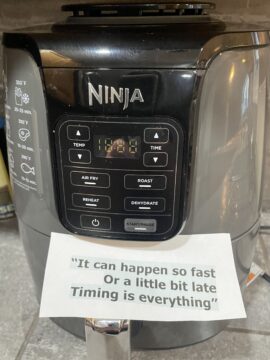by Barbara Fischkin

Part One
This story begins, as no great story ever has, with a dustbuster.
That’s right: A cordless, rechargeable handheld vacuum cleaner. If you don’t know, consider yourself lucky. It means you have had so much household help, that you never needed to recognize that dustbusters exist. Align yourself with George H.W. Bush, amazed, as he was, by a supermarket scanner.
A dustbuster once infiltrated my life and as much as I would like to make it the culprit of part one of this story, I blame two other operatives. For a dustbuster to be an actual culprit it would have to star in an anime film—or take on the alternative meanings assigned to it by the Urban Dictionary. (Don’t go there for this particular word, unless you want to read about raunch—or worse—ice hockey.)
As for the actual culprits, they are my husband Jim Mulvaney and his late mother, Eileen O’Keefe Mulvaney. My husband is an intrinsically good guy. But nobody is perfect. My mother-in-law—whom I loved deeply—had her own flaws. Super practical, but more about other people’s needs as opposed to her own. When we cleaned out her house, we found scores of nearly identical striped, button-down oxford shirts in their original packaging. I realized it was the shirt she wore on a daily basis. She was not a serious hoarder. She just hated going to the dry cleaners. Read more »

